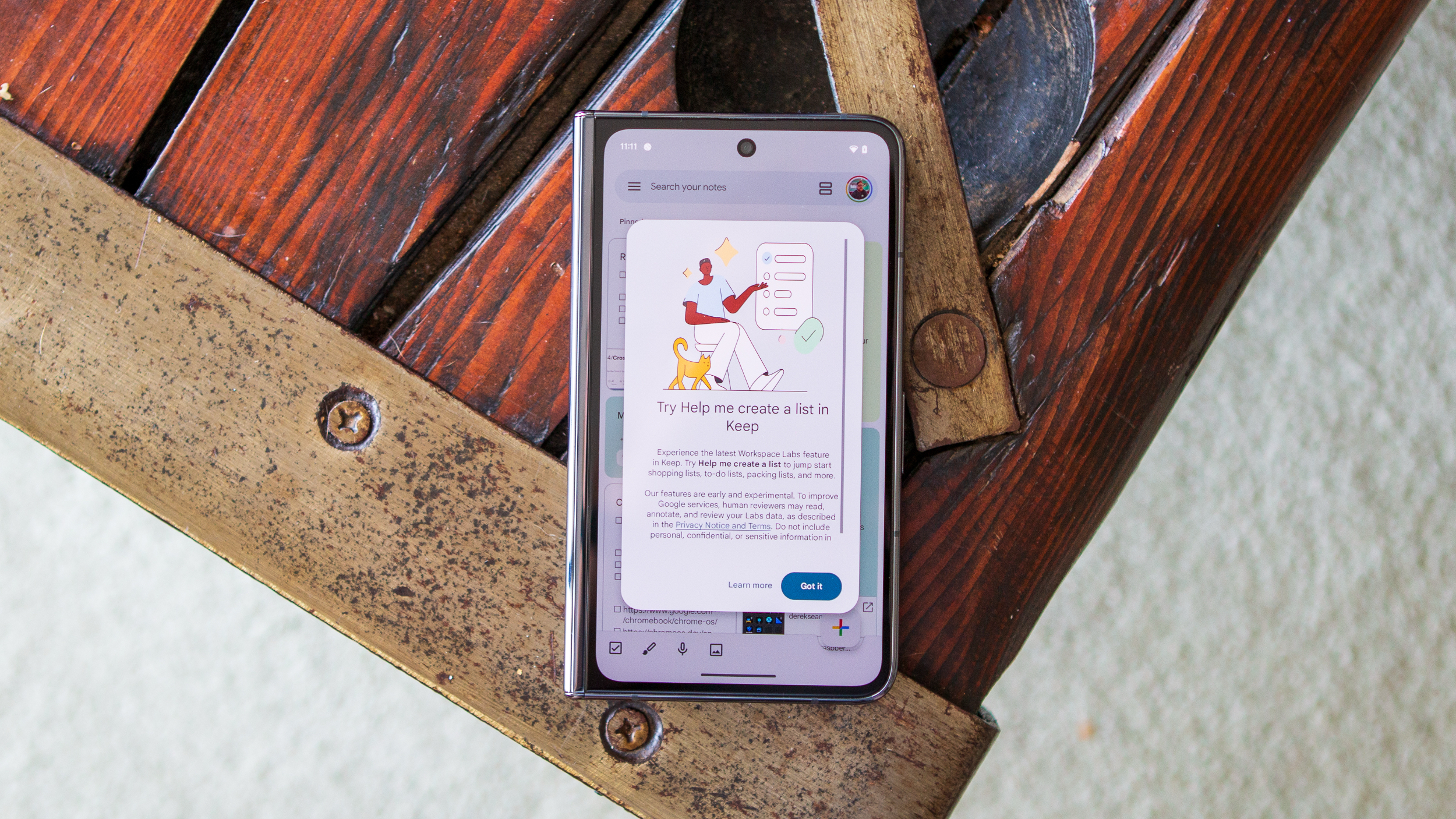Honor 400 Pro camera review: Passing the test with full honors
The Honor 400 Pro's camera feels flagship level in every respect.
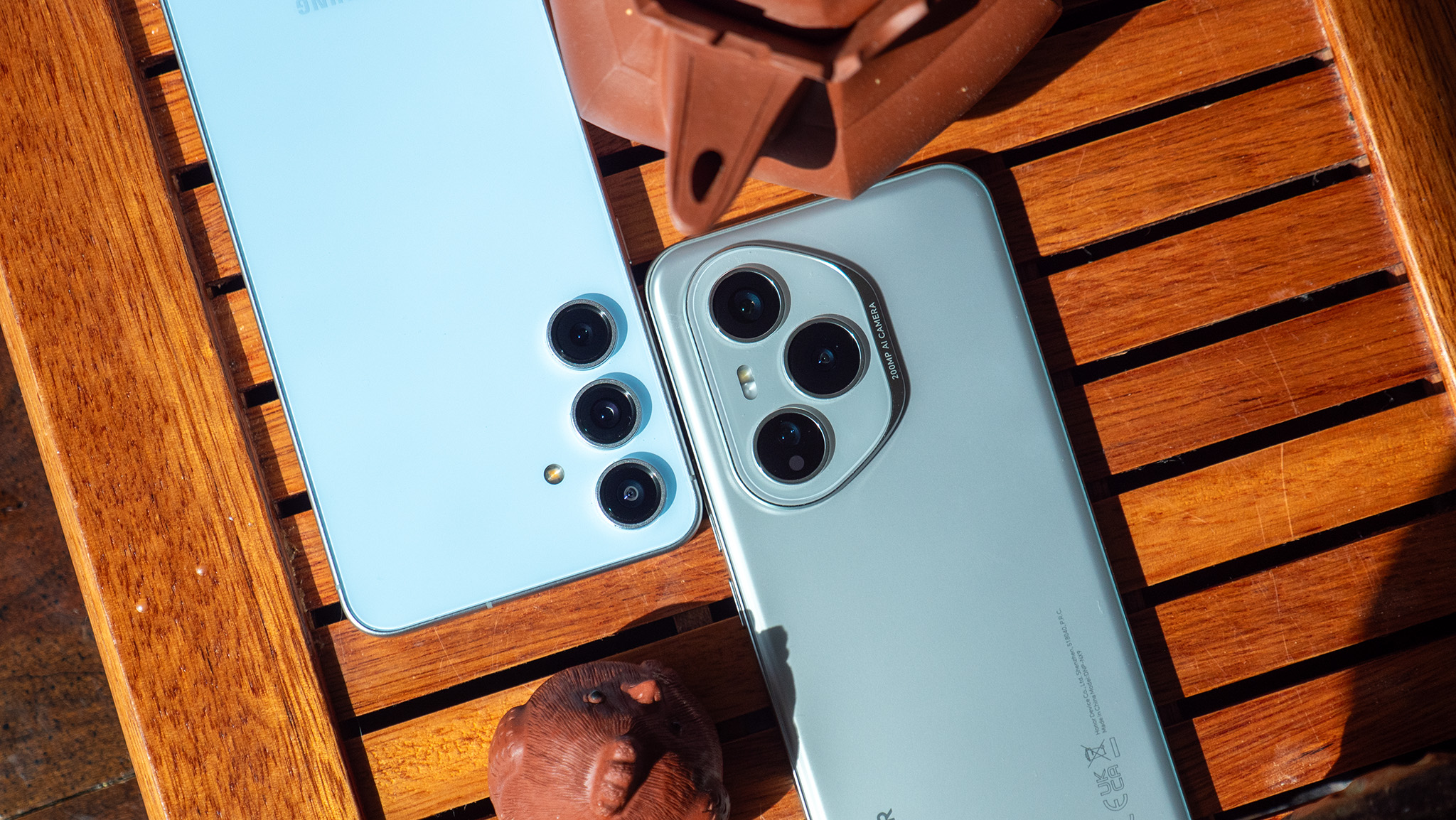

Android Central Labs is a weekly column devoted to deep dives, experiments, and a focused look into the tech you use. It covers phones, tablets, and everything in between.
Honor is back with another fantastic mid-range flaship phone that looks and feels much more impressive than the price lets on. With IP68 and IP69 water and dust resistance, a 200MP main camera, DC-dimmed display capable of 3840Hz PWM dimming at low brightness, and six years of software updates coming, there are plenty of reasons to be impressed with the Honor 400 Pro.
While there are many parts of a phone you might care about, a phone's display and camera system are the most important things to me. But Honor has steep competition at this price. From the Samsung Galaxy S24 FE, the Google Pixel 9a, or even the iPhone 16e, there's no shortage of options to choose from.
I'm taking a look at how the Honor 400 Pro compares with the Samsung Galaxy S24 FE camera, in particular, as it's the phone most people would likely choose if given a lineup of similarly-priced devices. Honor also has the standard Honor 400, and that goes up against the Galaxy A56.
Honor 400 Pro camera review: specs and modes
Main camera | 200MP, f/1.9, 1/1.4-inch size, OIS |
Telephoto camera | 50MP, f/2.0, 1/2-inch size, OIS, Sony IMX856 |
Ultrawide camera | 12MP, f/2.2, 112-degree FoV, autofocus |
Front camera | 50MP, fixed focus |
The camera hardware on the Honor 400 Pro looks a lot more like a flagship phone than a mid-range one. Not only does it have three rear cameras — something that gives it an immediate advantage over the Pixel 9a and iPhone 16e — but Honor's camera software is basically unmatched in its quality, too.
Last year, I was blown away by what Honor was able to do with AI. While it wasn't quite the all-encompassing buzzword it is today, Honor has fully leaned into the AI domain and describes nearly every mode and feature with the term. It's overused, for sure, but it doesn't make the results any less impressive. Here's a list of all the main modes and editing options you'll get with the Honor 400 Pro:
Honor image engine
- AI Super Zoom
- AI Portrait Snap
- AI Enhanced Portrait
- Al Focal Lengths Portrait
- HD Moving Photo
- Film Simulation Mode
- Harcourt Portrait Mode
- AI Motion Sensing Capture
AI editing
- AI Image to Video
- AI Eraser
- AI Erase Passers-by
- AI Remove Reflection
- Moving Photo Collage
- AI Outpainting
- AI Upscale
- AI Cutout
- AI Face Tune
Honor 400 Pro camera review: Main camera
The Honor 400 Pro's 200MP main camera is impressive on paper and in action. When compared to the Samsung Galaxy S24 FE, there's a clear stylistic difference between the two cameras. Samsung pushes for maximum dynamic range, which often results in very bright shadow areas and sometimes washed out colors.
In both daylight examples below, the sky is the wrong shade of blue and the green hue of the plants is a little too bright on Samsung's photos. Honor opts for a much richer, deeper color palette and it ends up looking a lot more realistic because of the decision.
Get the latest news from Android Central, your trusted companion in the world of Android


As we move indoors and into darker environments, we see the same scenario play out. Samsung's goal is seemingly to make the brightest image possible, often at the detriment of color accuracy. Neither photo looks bad by any means, but Honor's processing ends up looking better and sporting more realistic colors because the company pushes for a more contrast-heavy look, something Pixels have been renowned for historically.
One of the biggest differences between the photos is the handling of bight light sources in dark rooms where the Honor 400 Pro takes a serious lead. The windows are totally blown out in the Galaxy S24 FE's shot. Meanwhile, they're not only well balanced in the Honor 400 Pro's shot but you can actually make out details.
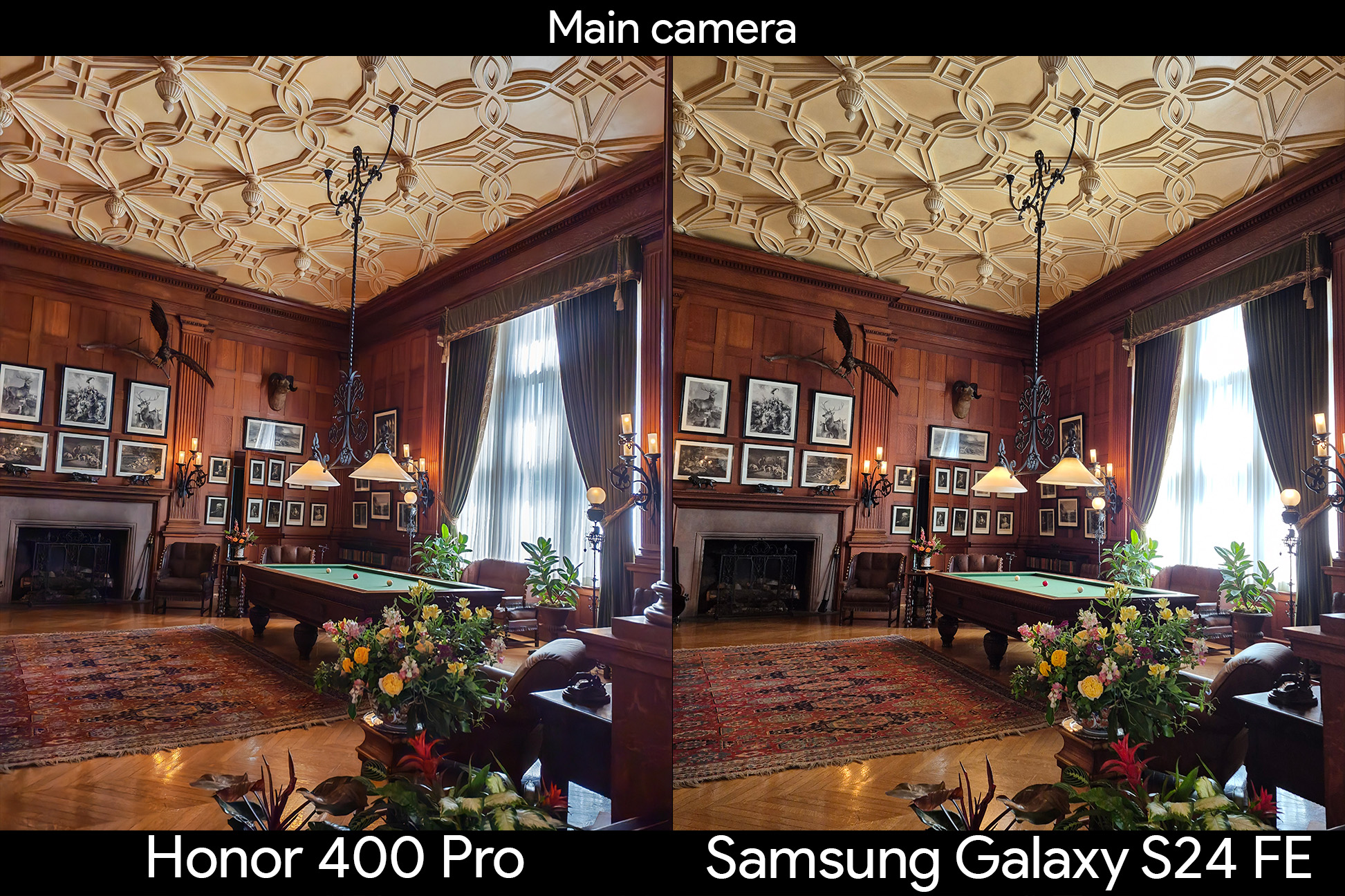
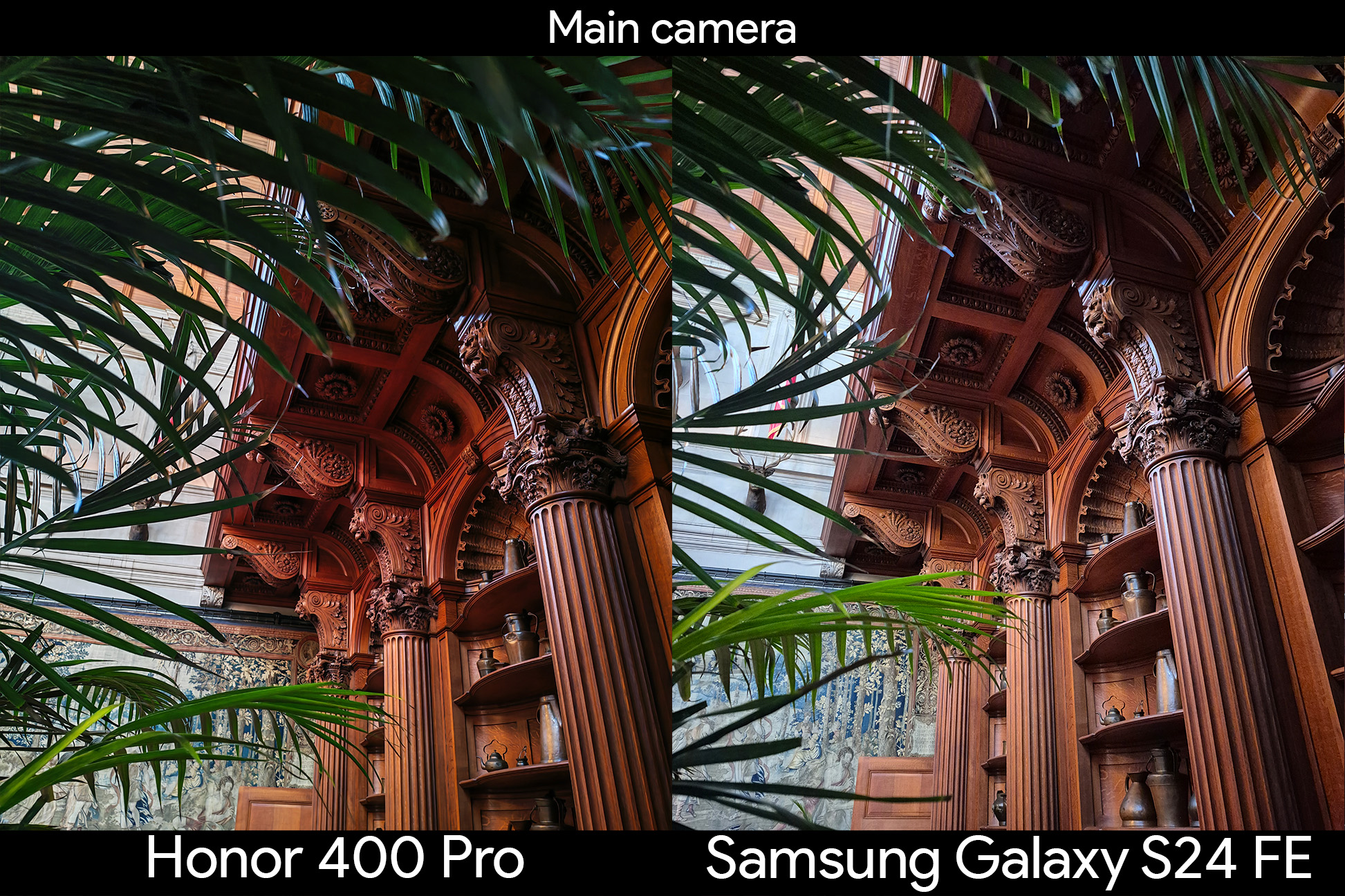

Honor 400 Pro camera review: Motion capture and portraits
Since the Magic 6 Pro, Honor's motion capture capabilities have become second to none. The company uses a highly-trained AI algorithm to help understand what the camera sees and capture moving objects based on that algorithm. The result is that you almost always get a crisp subject even when the person, pet, or thing is moving the entire time.
I tested this out on several subjects, but these two examples illustrate the main differences between the Galaxy S24 FE and the Honor 400 Pro's motion capture capabilities. Even in broad daylight, the Galaxy S24 FE struggles to capture an object in motion, something that should come as no surprise to anyone who has ever used a Samsung phone.
Honor pointed out that the Honor 400 Pro can capture moving subjects even when using portrait mode this time, and I found the results to be very impressive, so I put it to the test indoors where the light isn't so bright. The Honor 400 Pro did a fantastic job capturing me swinging a sword around in VR, even getting the colors and little details on the headset crisp. The Galaxy S24 FE's colors are not only wrong, but I'm very blurry because of the movement.
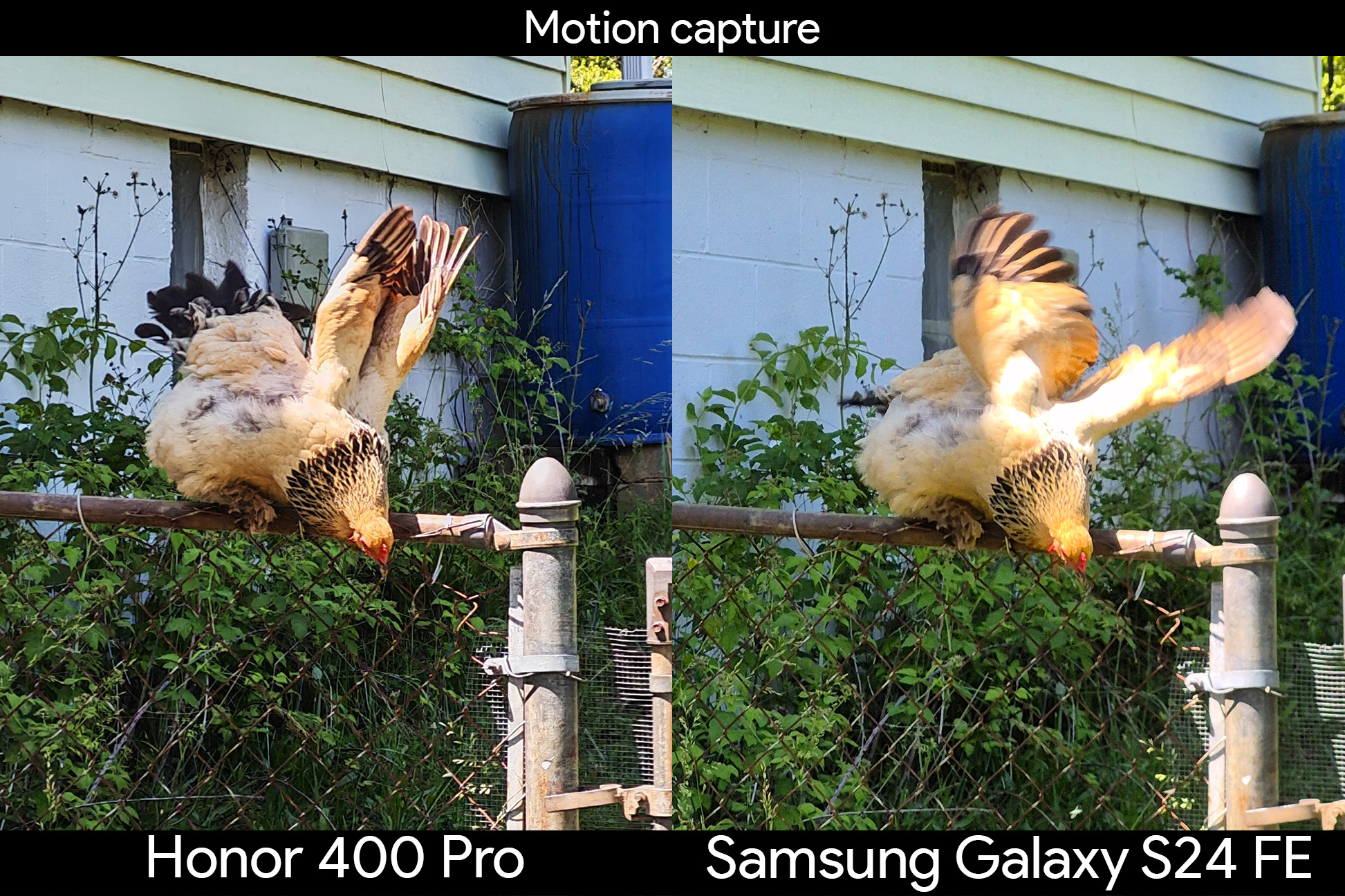
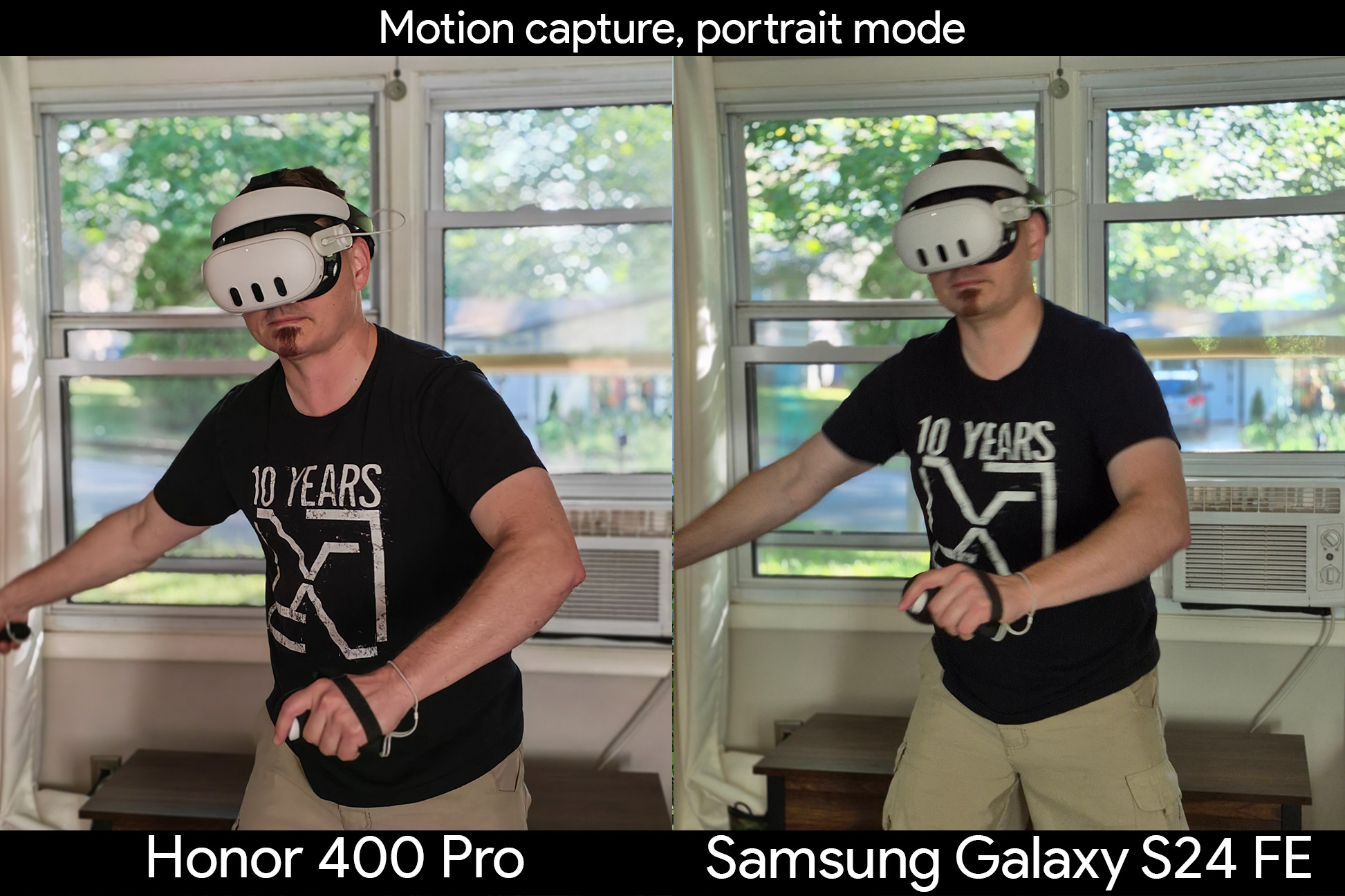
Samsung phones have produced some of the best portrait mode photos for years, but last year's Honor 200 Pro gave Honor the edge it needed. Honor is still using the Harcourt portrait-style processing that gives you three main color options, in addition to a new AI portrait mode that can be enabled for greater clarity, especially while using 6x zoom.
As you'll probably expect at this point in the review, the Honor 400 Pro does a superb job of capturing a better photo than the Galaxy S24 FE. Honors portraits are brighter, more vibrant, have better detail, and do a better job of prioritizing lighting on the subject rather than the background. I also found the colors to be a lot more accurate on the Honor 400 Pro, especially with black and brown colors as you'll see on my shirt and one of my chickens.
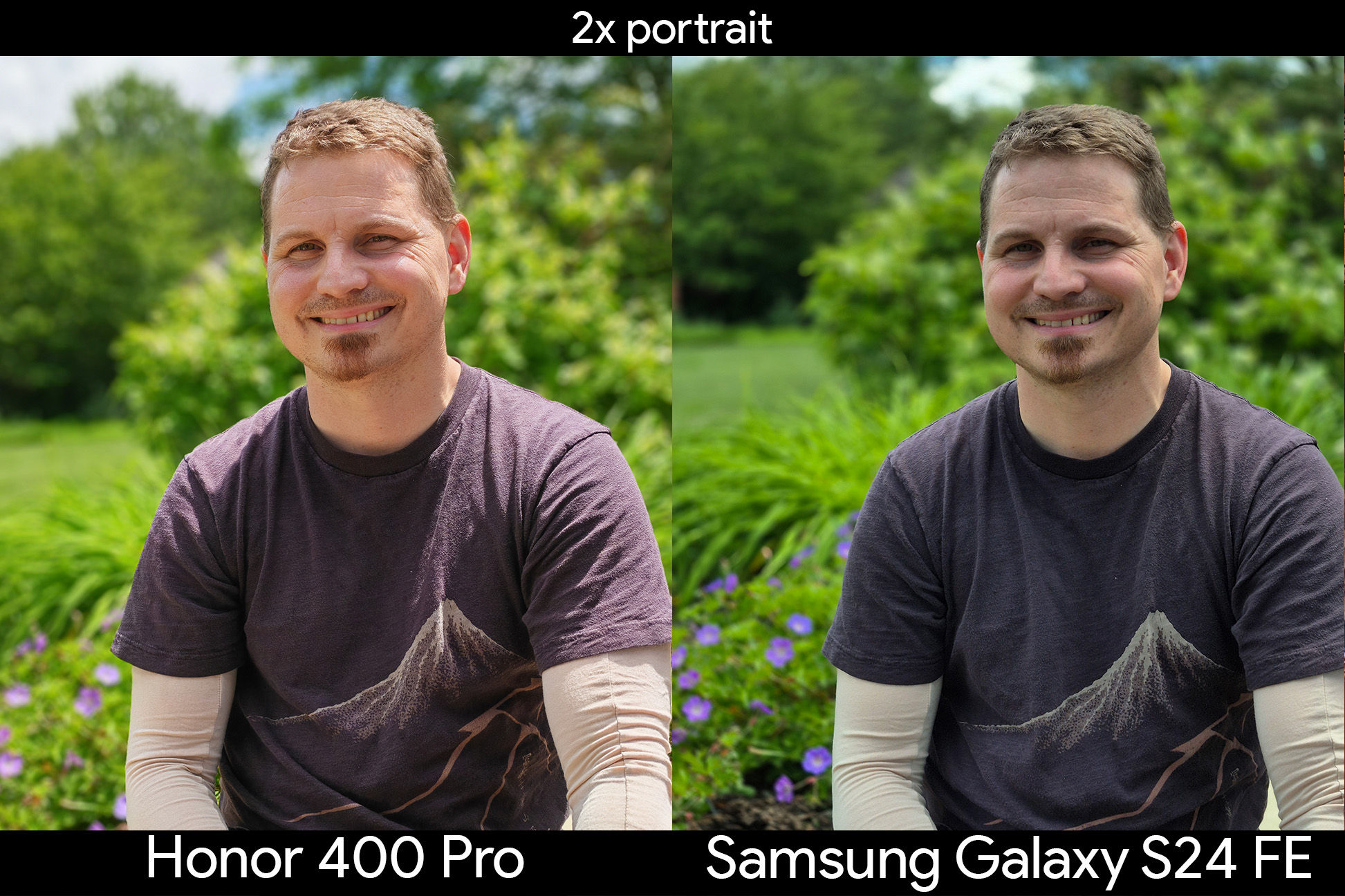
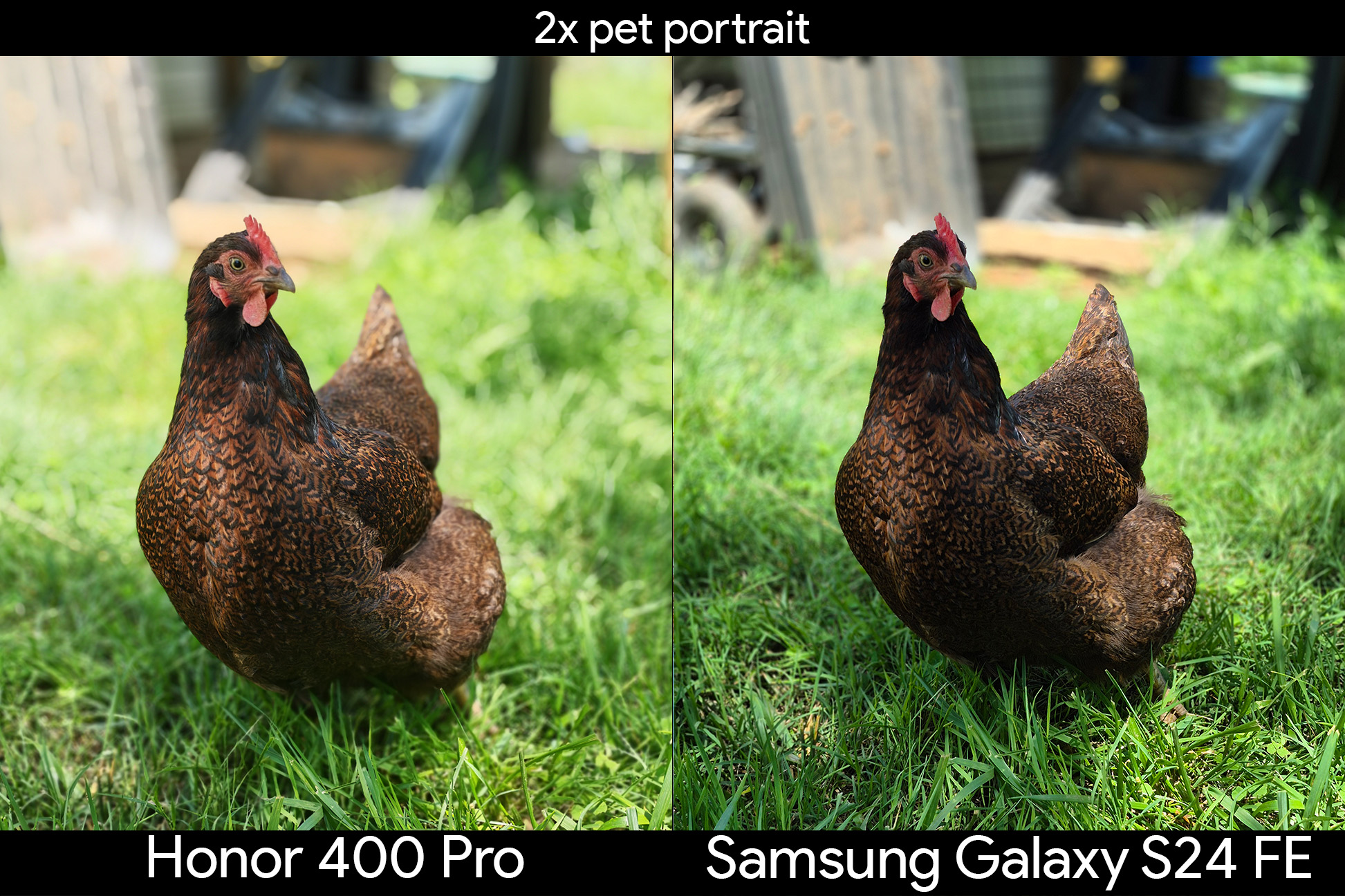
Honor 400 Pro camera review: Telephoto and zoom
Both the Honor 400 Pro and Samsung Galaxy S24 FE feature a 3x telephoto camera on the back, something you won't find on the Google Pixel 9a or an Apple iPhone 16e, despite being in the same price range. But the Honor 400 Pro features a 50MP sensor behind that lens, while the Galaxy S24 FE has just an 8MP sensor.
Megapixels aren't everything, but there's a very clear difference in the results. Let's start with 2x shots, which are just a crop of the main sensor on both phones. In the two darker indoor shots, the Honor 400 Pro nailed the color of the wood and did a superb job with the lighting. The contrast on the Honor 400 Pro's photos are excellent, while the Galaxy S24 FE is too bright in both shots, particularly in the library with the light leakage from the windows.
Even during the day, there's an obvious different in color accuracy, clarity, and overall details on the Honor 400 Pro versus the Galaxy S24 FE.


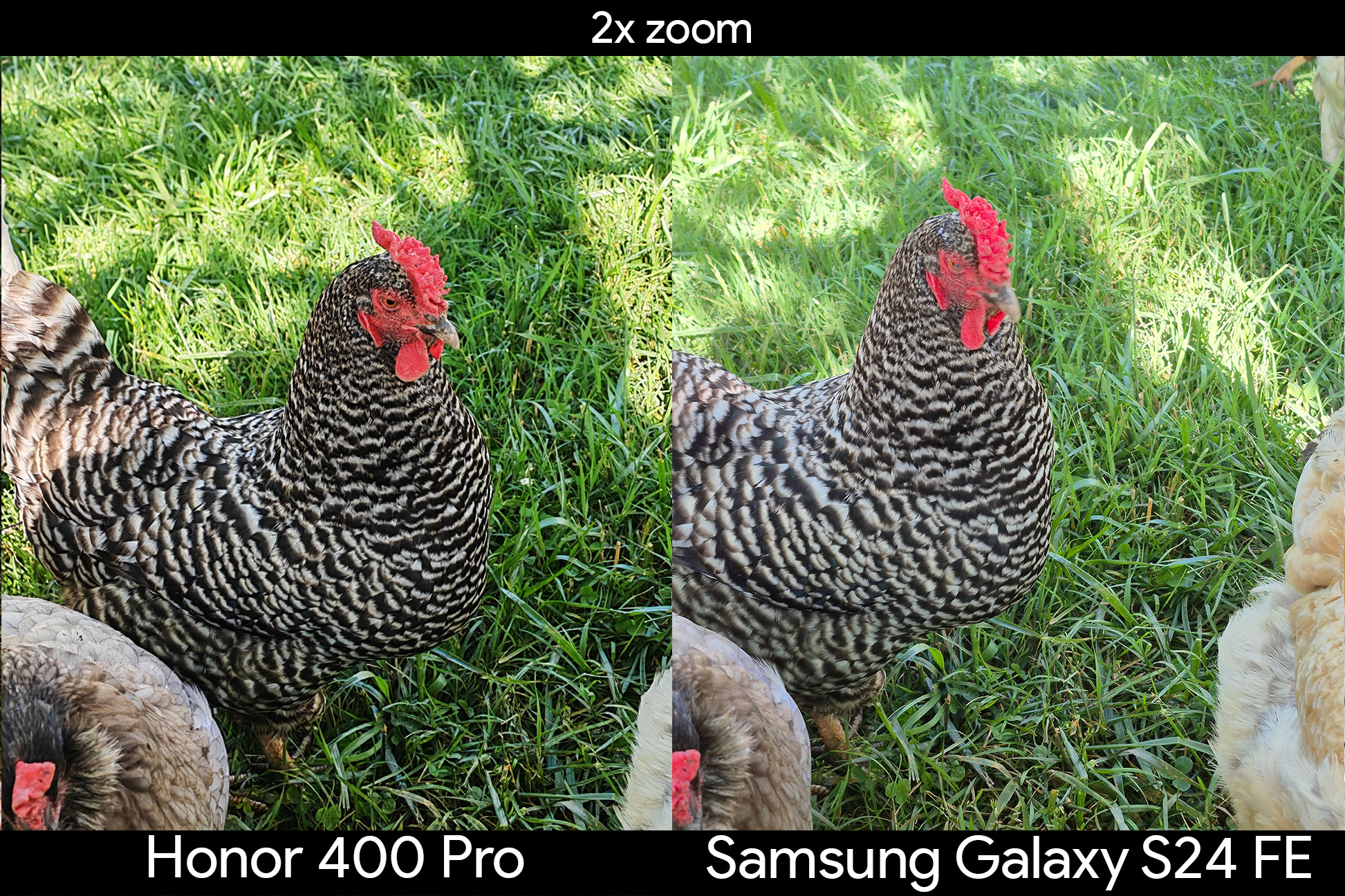
Zooming in 3x or greater uses the telephoto sensor on both phones, and it's once again clear which ones does it better the moment you look at any photo. Details, color accuracy, and contrast are all better on the Honor 400 Pro no matter what zoom level is used, resulting in a better photo every time.
Zooming in beyond 10x is a mixed bag on both phones, but the Honor 400 Pro has a greater chance of producing something usable than what I've found from the Galaxy S24 FE. Honor has a built-in AI enhancement mode that can be toggled when zooming in at 15x or further, but I've found this to be less useful than I'd hoped. The 18x zoom of the scarab beetle, for instance, looked exactly the same with AI mode toggled on or off.
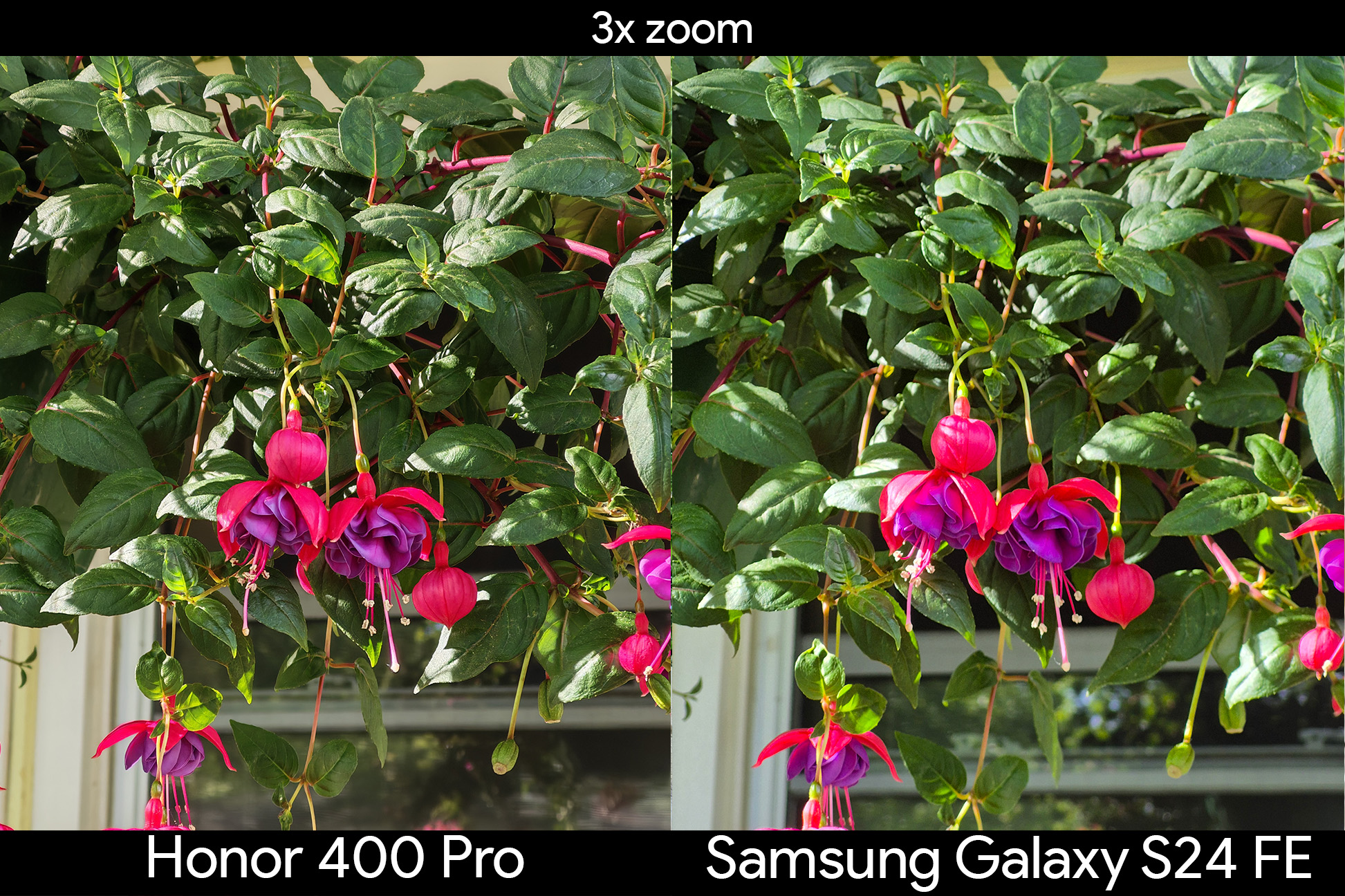

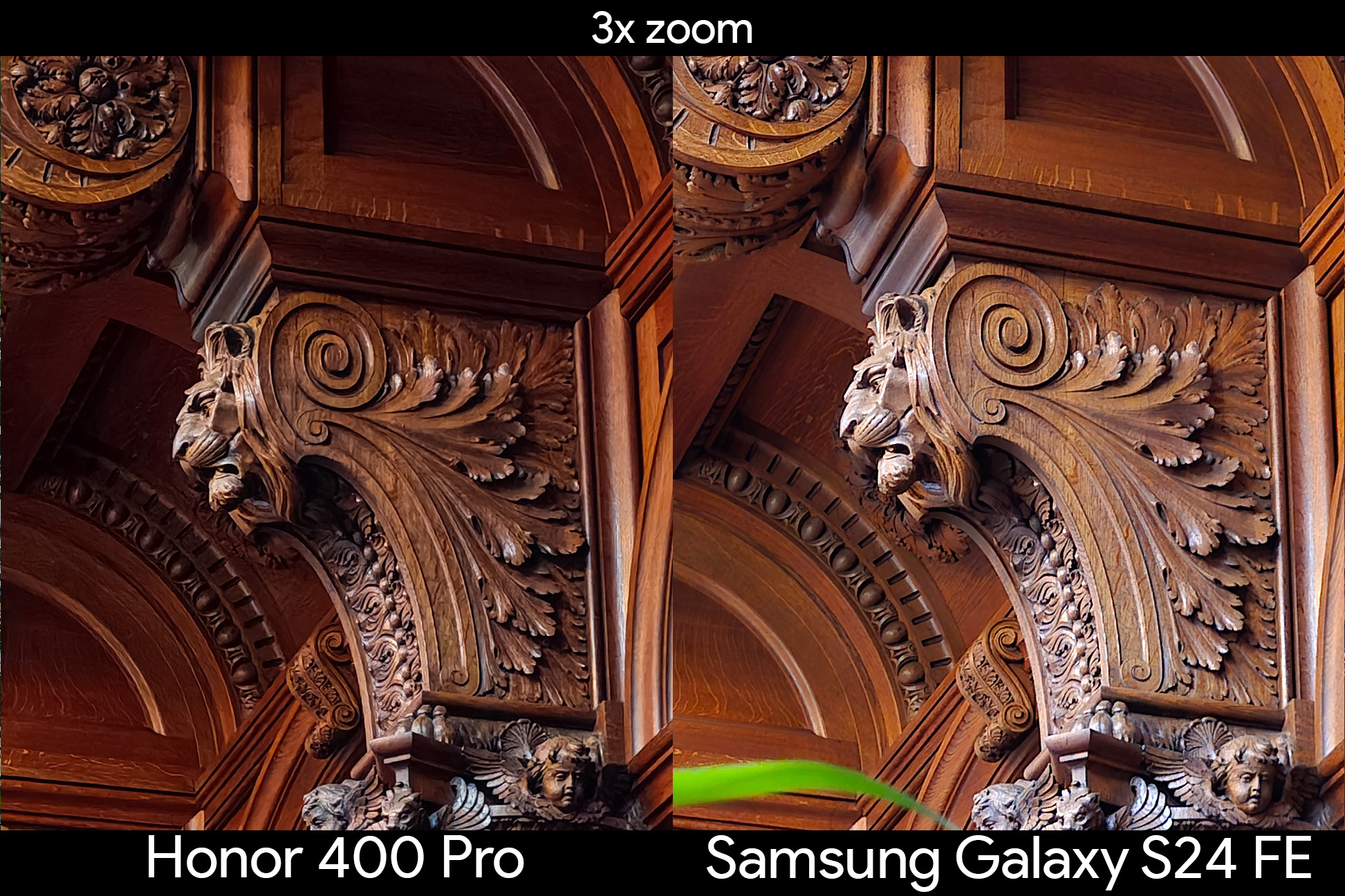
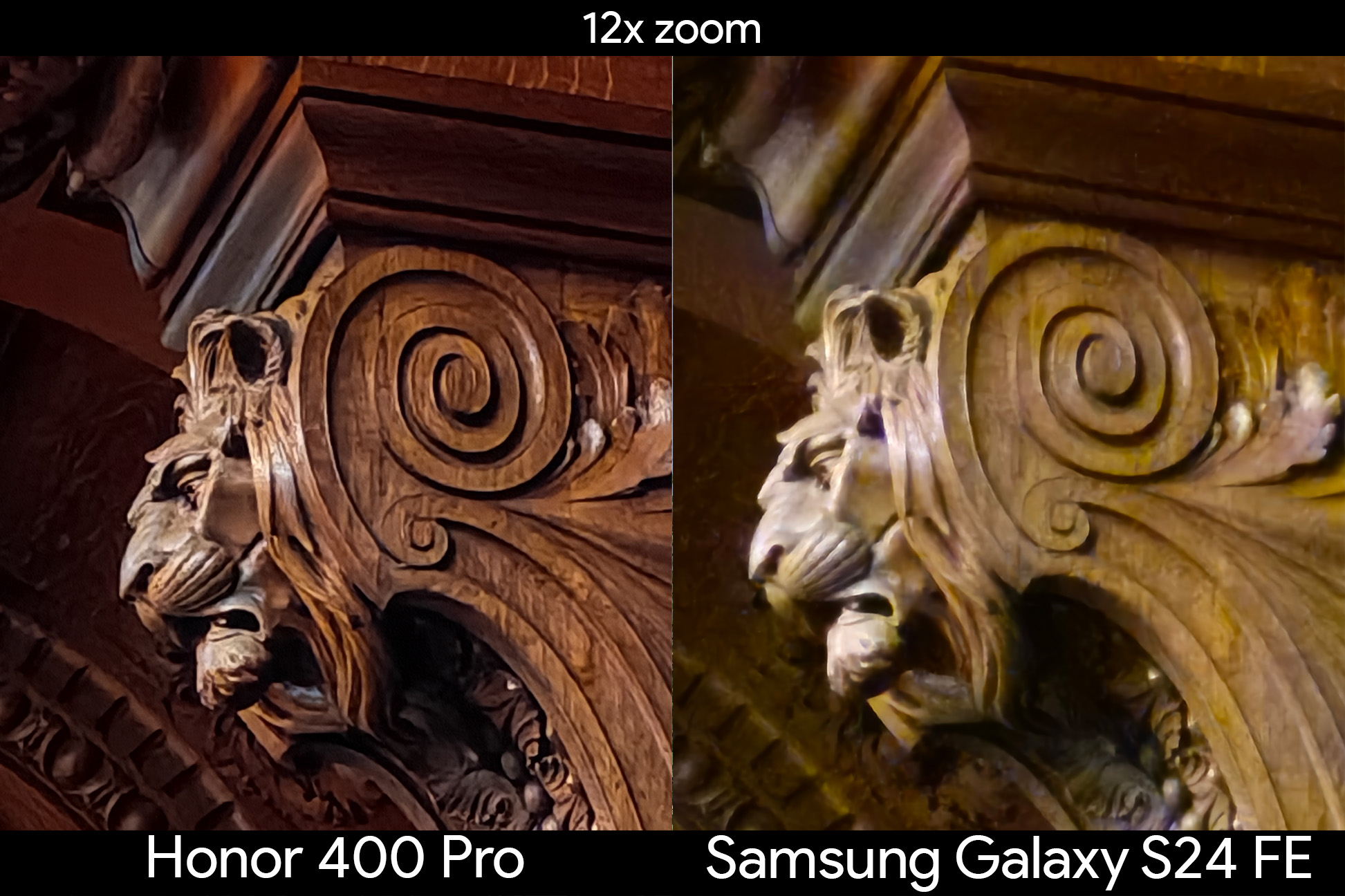
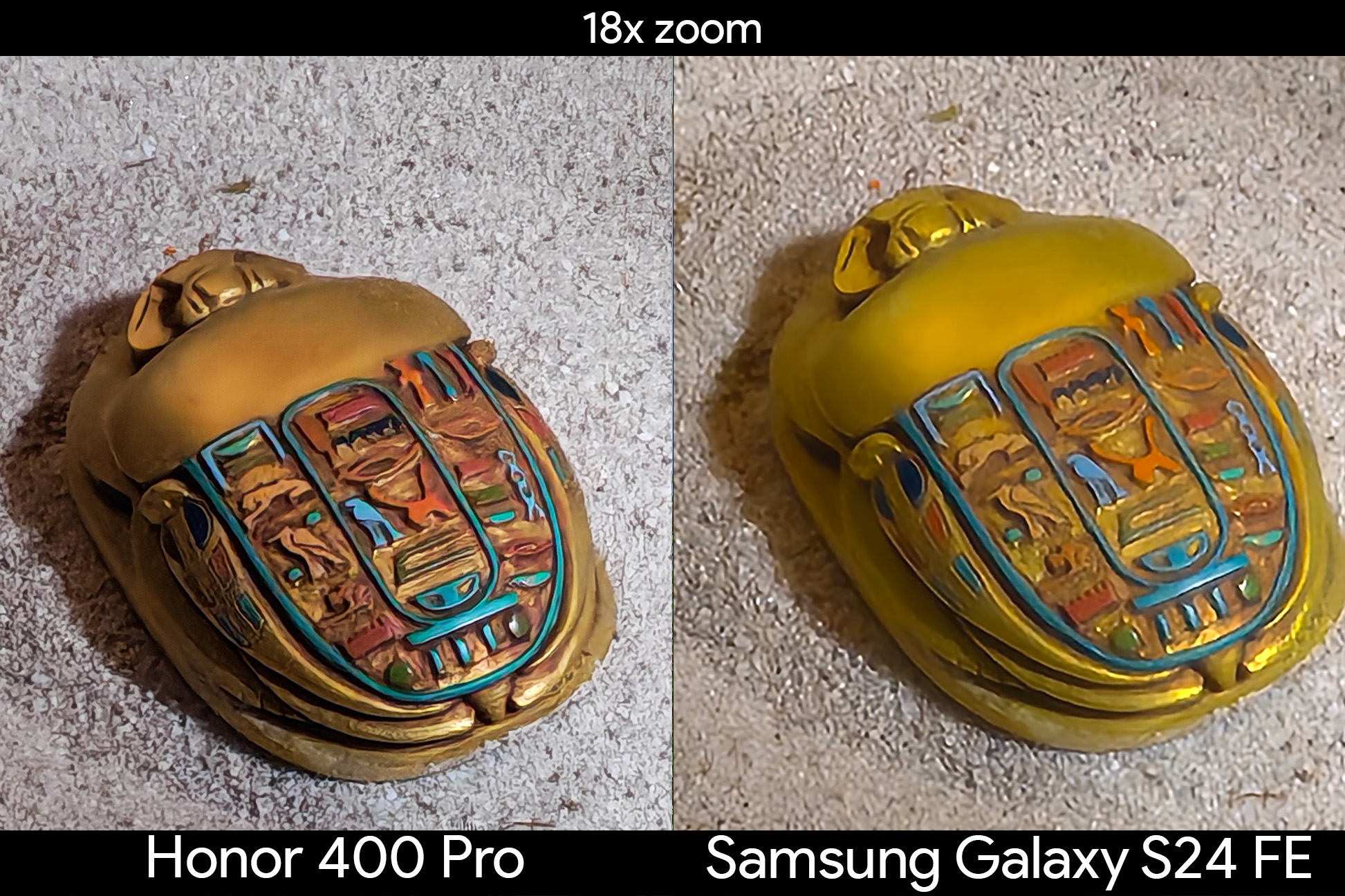
Honor 400 Pro camera review: Ultrawide, macro, and selfie
On paper, there's not much of a difference between the Honor 400 Pro and the Samsung Galaxy S24 FE's ultrawide cameras. Both are a 12MP sensor, but the Honor 400 Pro's is capable of autofocus, helping it to double as a macro camera. To get the same types of macro shots on the Galaxy S24 FE, you'll have to use the 2x zoom button to use the main sensor rather than getting up close to the subject. The result is a significantly better photo from the Honor 400 Pro, with crisper details and better contrast.
Otherwise, ultrawide camera performance is largely identical between the two phones. As a rule of thumb, it seems like the Samsung Galaxy S24 FE's ultrawide camera captures marginally better fine detail, while I prefer the colors and contrast of the Honor 400 Pro's ultrawide camera.
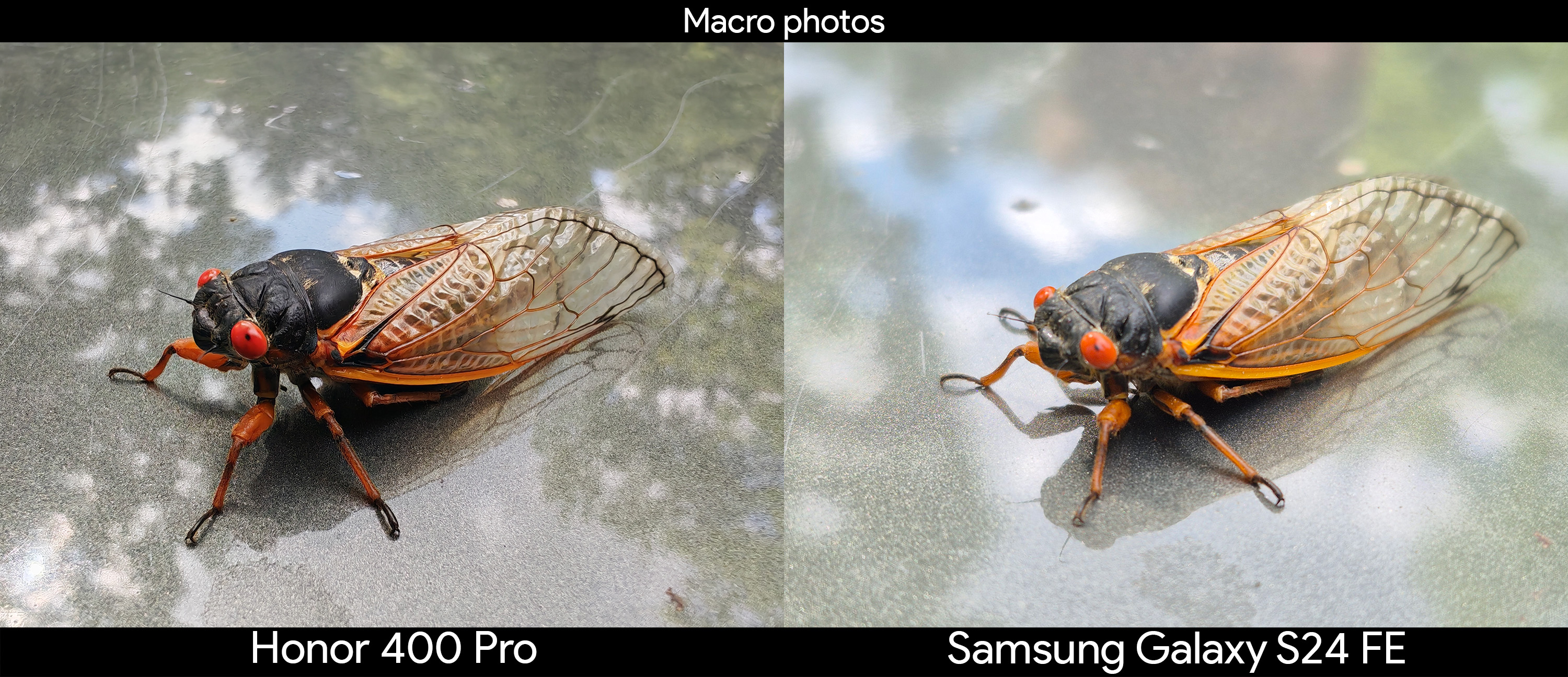

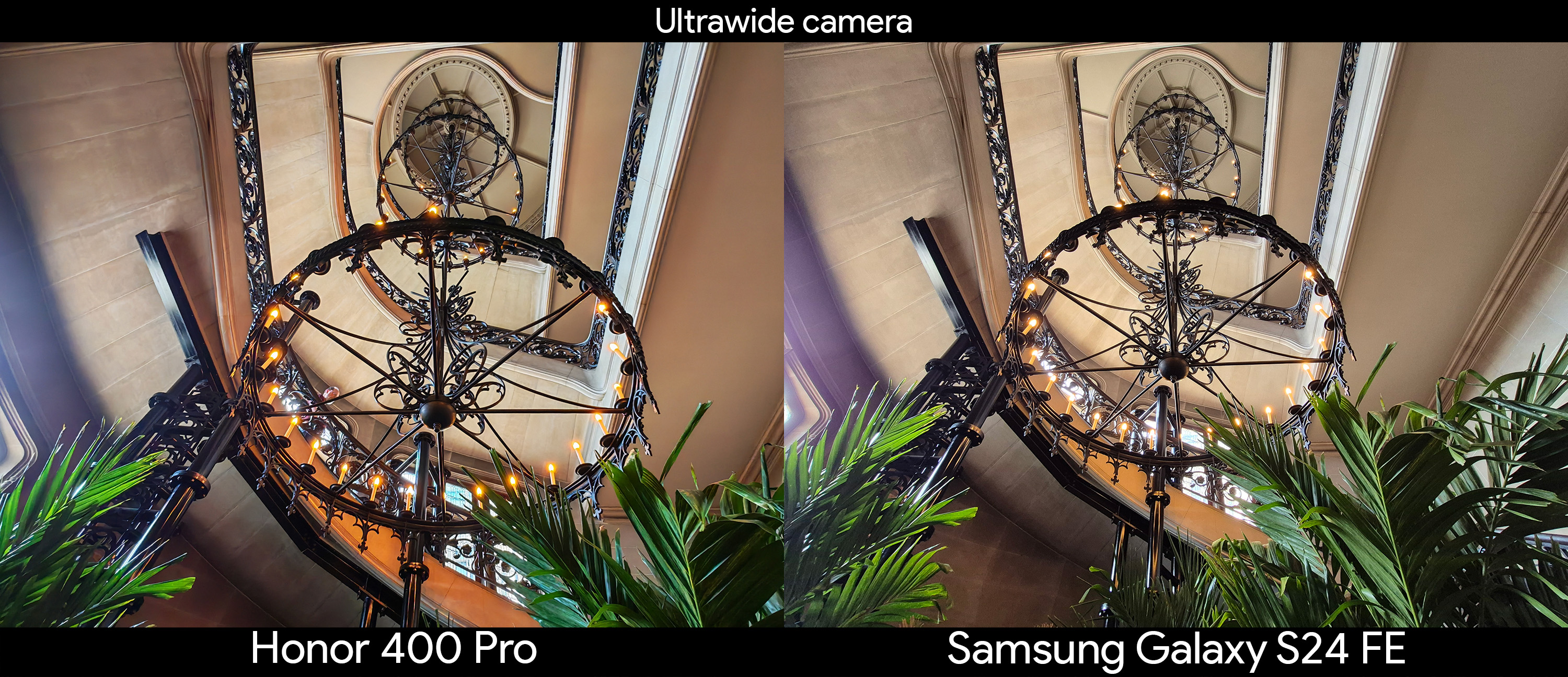
The front-facing cameras couldn't be more different on paper. The Honor 400 Pro uses a new 50MP front-facing camera sensor, while the Samsung Galaxy S24 FE uses a 10MP one. Both are fixed focus sensors with no real depth to them, so using portrait mode is important if you want that classic photo feel.
I expect good portrait results from both companies and neither phone disappoints there. Both feature clean cutouts of me and my pet hen, but the Honor 400 Pro's background blurring is more subtle than the Galaxy S24 FE's. As has been the case in this entire review, the Honor 400 Pro's colors and contrast are better, giving it a better overall look.
Darker environments showcase less of a difference between the two, but those differences remain the same. The Honor 400 Pro has better contrast and colors, even if it's to a much smaller degree than we've seen elsewhere in the review.
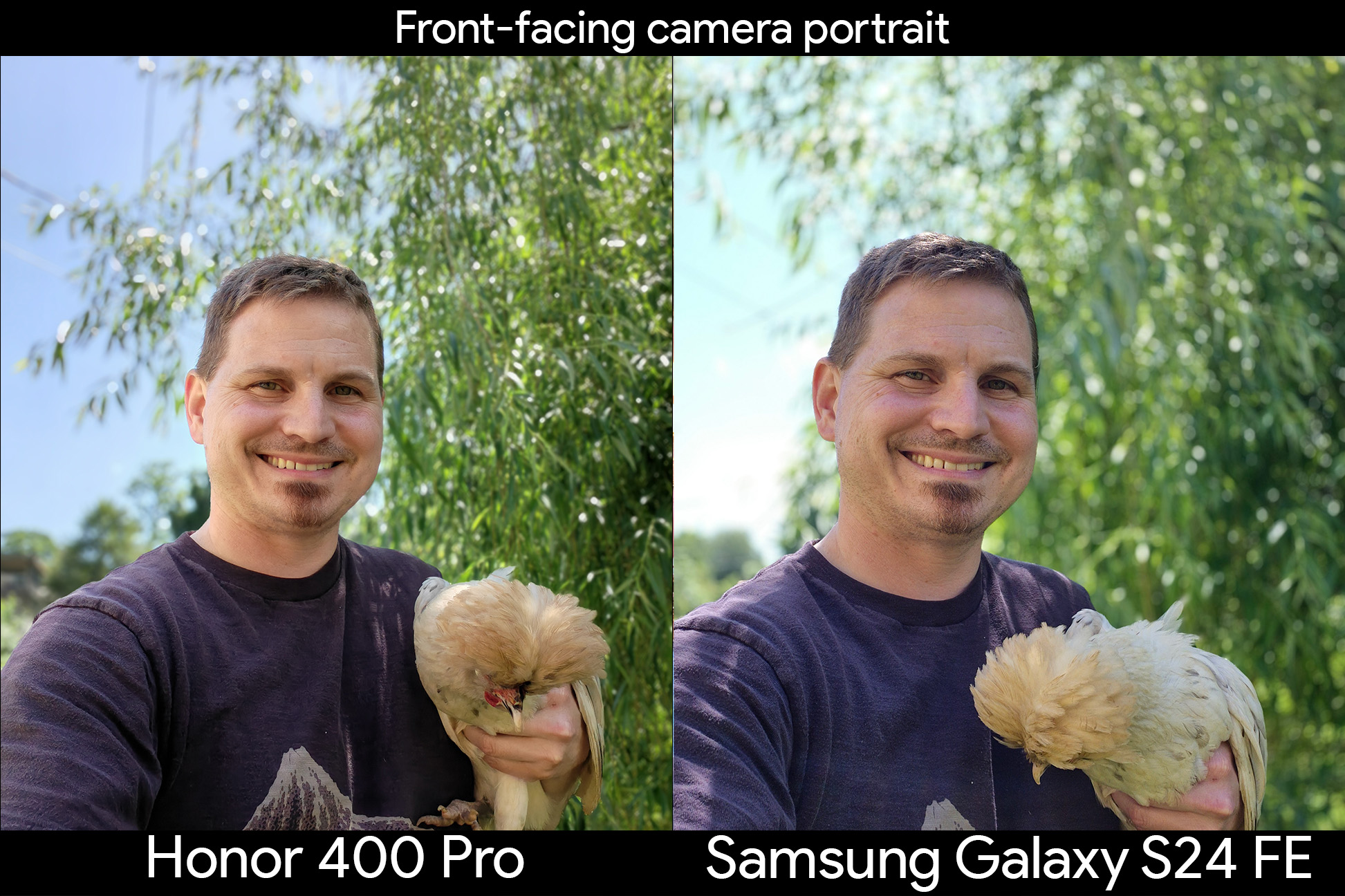
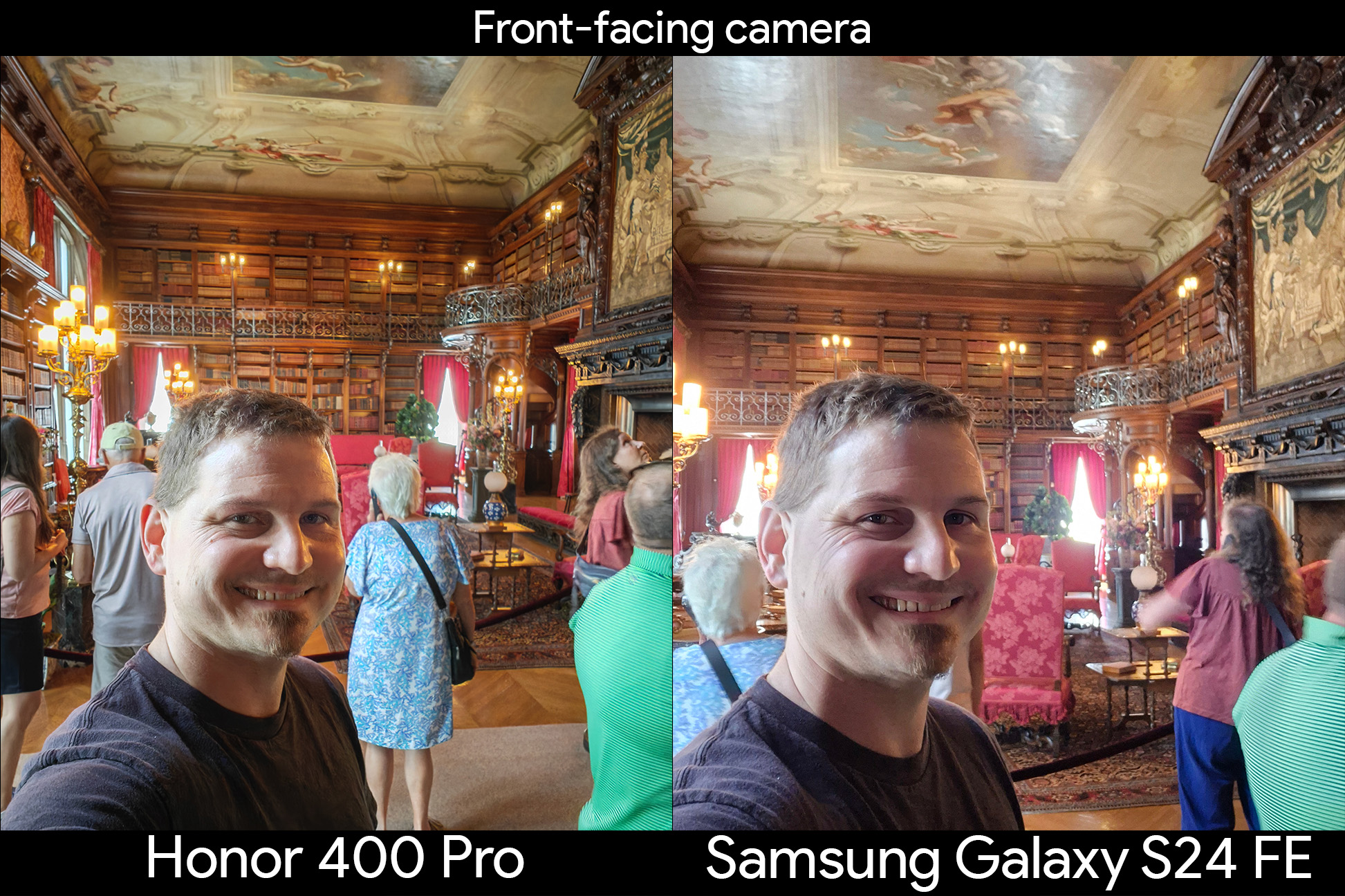
Honor 400 Pro camera review: The new mid-range camera champion
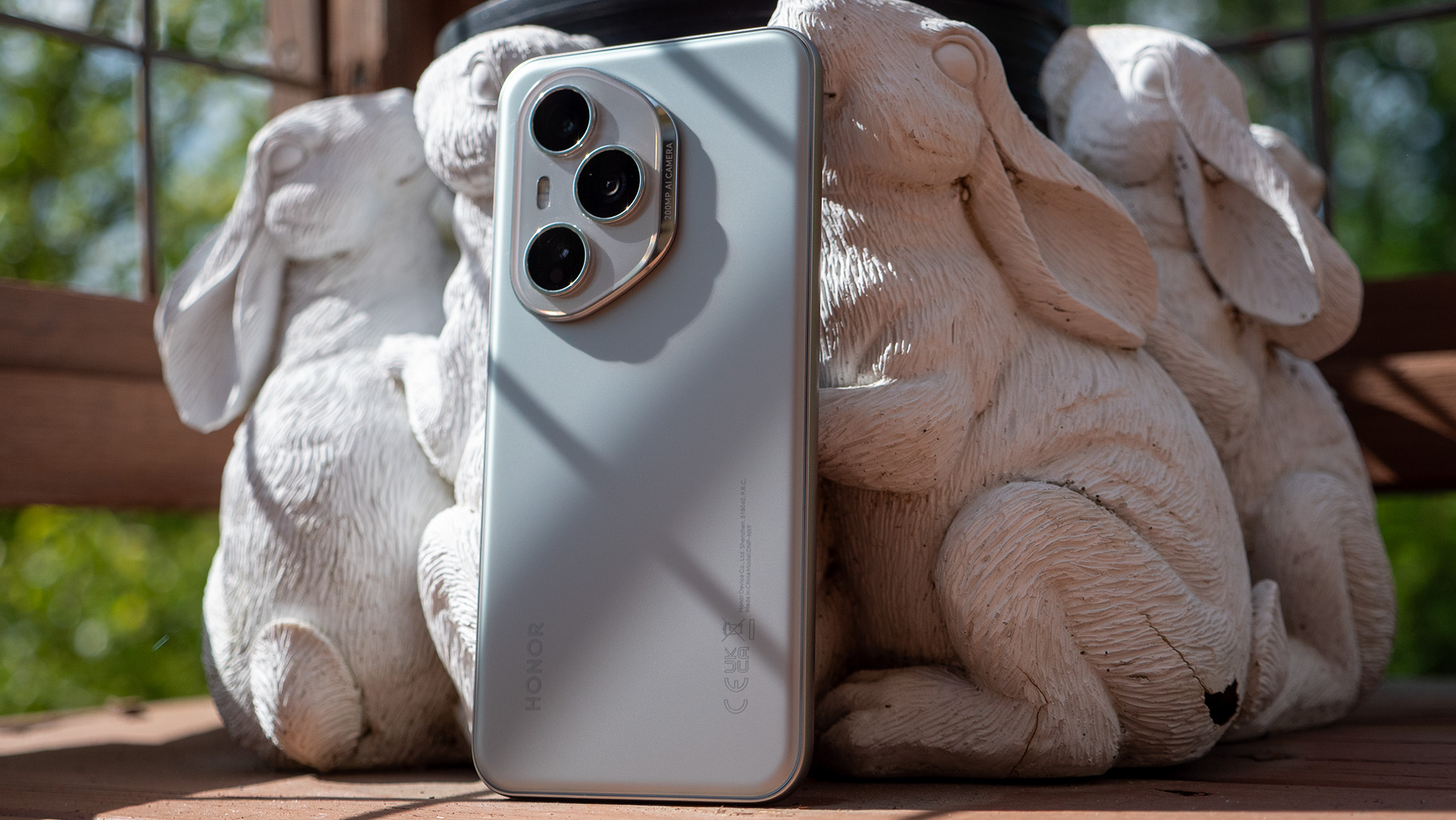
The Honor 400 Pro won this test hands down, and it wasn't even close in the vast majority of the categories. Honor's processing is just plain better than Samsung's, with better contrast, more accurate colors, more correct emphasis on prioritizing subjects over backgrounds, substantially better motion capture quality, and greater zoom detail overall.
It's actually hard to find a weak point with the Honor 400 Pro's camera, as it does everything exceedingly well and doesn't seem to struggle no matter what mode is selected. The worst thing I can say about it is that its ultrawide camera isn't better than the Galaxy S24 FE's when taking wide-angle shots, but that changes when getting in close as the Honor 400 Pro's ultrawide camera can use autofocus, allowing it to be used as a 50MP macro camera.
If you're in the market for a good new mid-range phone, there's no better choice than the Honor 400 Pro. It's got a great eye-friendly display which is significantly better than the Pixel 9a or Galaxy S24 FE's screen, six years of software updates to come, a stronger build and design than most phones (not just mid-range ones), plus what's clearly the best mid-range camera you'll find anywhere.
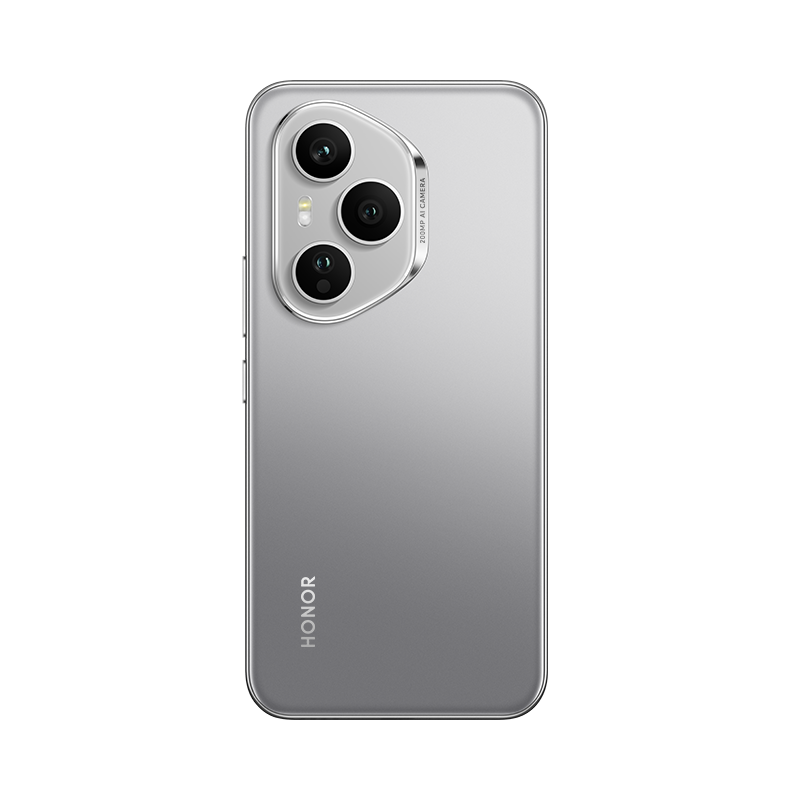
The Honor 400 Pro is the mid-range phone with a flagship camera, IP68 and IP69 water and dust protection ratings, six years of software updates to come, and all the AI tricks you ever wanted.

You must confirm your public display name before commenting
Please logout and then login again, you will then be prompted to enter your display name.
